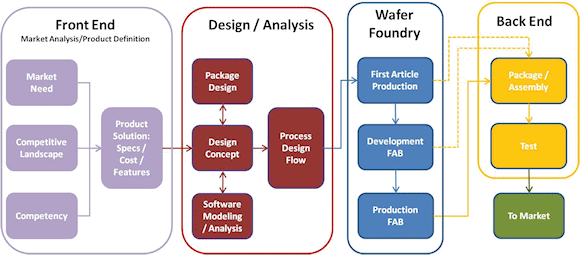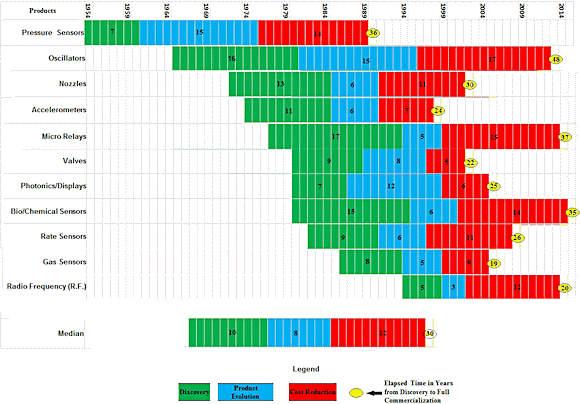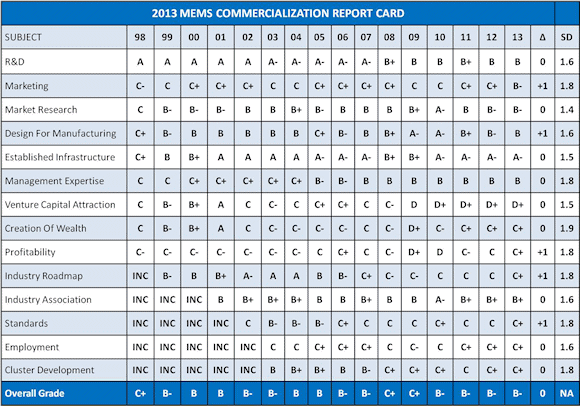
Introduction
This article, the first of a nine episode series, provides the results of the recently completed 2013 MEMS Industry Commercialization Report Card Market Research Study (Report Card). I have conducted the requisite research and published its results annually beginning in 1998. For the establishment of the specific topics of the Report Card, market research was conducted on the general topic of technology commercialization and resulted in the selection of a number of critical success factors, a.k.a. topics, which were considered necessary for successful commercialization specific to MEMS and to the MEMS industry. The Report Card began with nine topics in 1998 and by 2003 it had expanded to 14 topics based on continuous reassessment of the ever changing dynamics of the MEMS industry.
The purpose of the Report Card is to provide MEMS industry participants with an objective metric-based assessment of these critical success factors over time and to act as a tool to help them better understand, respond to and exploit the ever changing dynamics of the MEMS industry. The MEMS Industry Commercialization Report Card has been developed not only to help assess the progress of the commercialization of this technology but more importantly to serve as a vehicle to help guide industry participants overcome the barriers to the successful commercialization of MEMS.
The Report Card is unique in the technology commercialization strategy sector and also to the MEMS industry. It addresses many of the critical components of the MEMS commercialization process model that I created based on extensive research and includes design for manufacturing and test, infrastructure, marketing and market research (see figure 1). The Report Card has been widely published and presented worldwide since its introduction in 1998 and is universally accepted as a valuable tool for MEMS industry participants to help create winning business strategies for their organizations.

Fig. 1: Commercialization Block Diagram with Interconnects
THE PROBLEM
It is interesting to note that MEMS technology established vis-à-vis the discovery of the piezoresistive effect at Bell Laboratories in 1955 by Charles Smith is approximately the same age as integrated circuit (IC) technology established vis-à-vis the semiconductor effect that was discovered at the same laboratory by Bardeen et al. only a few years earlier. The commercialization process has been researched and tracked for several MEMS- products e.g. pressure sensors, accelerometers and shows that it takes on an average approximately 30 years for these products to become totally commercialized[1] (see figure 2).

Fig. 2: Commercialization Timeline
More importantly however, the total sales of MEMS as reported by numerous groups in 1998 was approximately 1/25th of the sales of ICs at the time of the publishing of the first Report Card. The MEMS market for 2013 has been reported by several organizations to be approximately $10-$12 Billion (US) whereas Gartner Research has reported that that total IC market for 2013 was $315.0 Billion (US), approximately a 30:1 ratio.
The positive news here is that the MEMS market has been reported to be growing over the past several years at a compounded annual growth rate (CAGR) in the 10-12% range, primarily fueled by mobile phones/tablets and consumer products whereas the IC market has recently fluctuated by $299.9 Billion (US) in 2012 and $307.8 Billion (US) in 2011 as per Gartner Research. However, the question still remains, why is there still such a significant disparity in the market sizes? The Report Card's raison d'être is to help address this seeming paradox.
Research Methodology
Questionnaires were emailed to selected individuals in a database who have and continue to play major roles in the MEMS commercialization process. These expert participants represented a broad range of MEMS manufacturers, users of MEMS, and individuals who represent companies engaged in MEMS infrastructure e.g. foundries, design software and equipment providers. With rare exception, academics were not included in the research universe. The participants represented a worldwide universe with the majority of the respondents coming from the US and Europe.
Members of the research universe were asked to rate the 14 critical success factors and topics with grades A through D using plusses and minuses where applicable. Additionally, they were asked to provide specific comments as to the rationale of their assigned grades. The 85 respondents had a collective experience of over 1,700 years averaging out to approximately 20 years per respondent. Certainly this was an exceptionally well-experienced and well qualified group of expert participants.
This research approach, known as Delphi, was developed by Project Rand during the 1950's and 60's by Olaf Helmer, Norman Dalkey, and Nicholas Rescher. It provides the best possible insight into a research topic where a statistically significant and projection-able approach is not feasible.
Figure 3 provides the letter grade results of the 2013 MEMS Commercialization Report Card on a yearly basis from 1998 to 2013. It also provides the change in grade from 2013 to 2013 as well as the standard deviation of the responses for each of the 14 topic grades in 2013.

Fig. 3: Report Card Letter Grades with standard deviation (SD).
Results
As previously mentioned, each of the 85 respondents to the 2013 report card was asked to provide a letter grade to each of the 14 subjects and to also provide comments that were the rationale of the grade. Of the approximately 1,200 comments submitted, I've reviewed all of these and attempted to summarize responses that reflect the consensus. Change from the 2012 to 2013 grades are provided as well as the standard deviations (SDs) of the grades for each of the subjects from 1998 to 2013.
In the following weeks, I will provide details on each of the topics including several "verbatim" comments as well as my own interpretation of the comments and sharing personal perception of the MEMS industry. Be sure to check in for the next installment on September 19, 2014.
REFERENCES
[1] R. Grace, S. Walsh; MEMS Industry Roadmap; Micro and Nanotechnology Commercialization Education Foundation Roadmap; Chapter 2; 1990; www.mancef.org
About the Author
Roger H. Grace is president of Roger Grace Associates (Naples, FL) which he founded in 1982 as a marketing consultancy serving the sensor, MEMS, IC and capital equipment markets. He holds the B.S.E.E. and M.S.E.E. (as a Raytheon Company Fellow) degrees from Northeastern University where he was awarded the Engineering Alumni of the Year Award in 2004. He was a visiting lecturer at the University of California at Berkeley College of Engineering from 1990 to 2004. He can be contacted via email at [email protected].
Related Content
The Industry's First Foundry Business for MEMS Utilizing Thin-Film Piezoelectric Elements
Broadcom Announces WICED Sense to Grow Internet of Things Applications
Hundreds of sensors packed into a single optical fiber